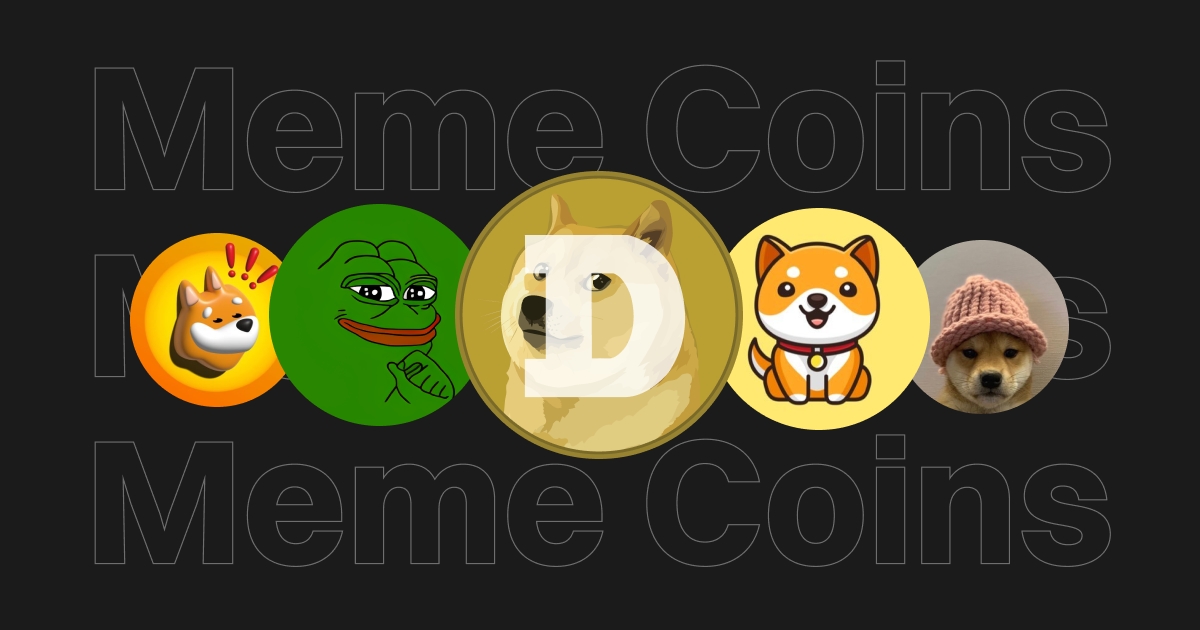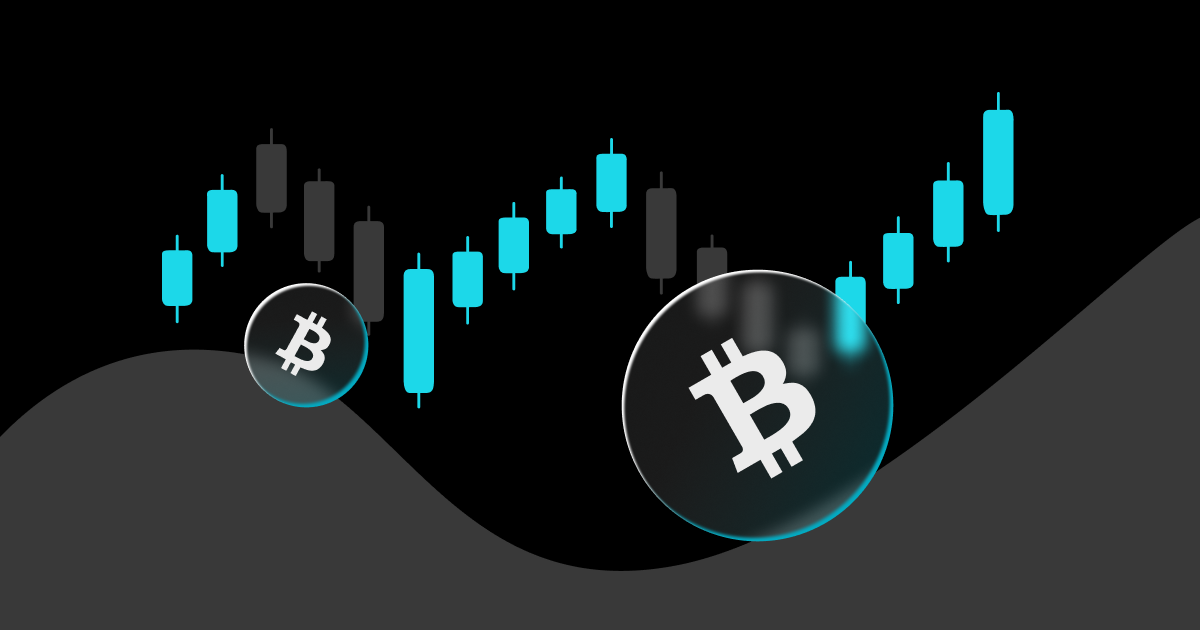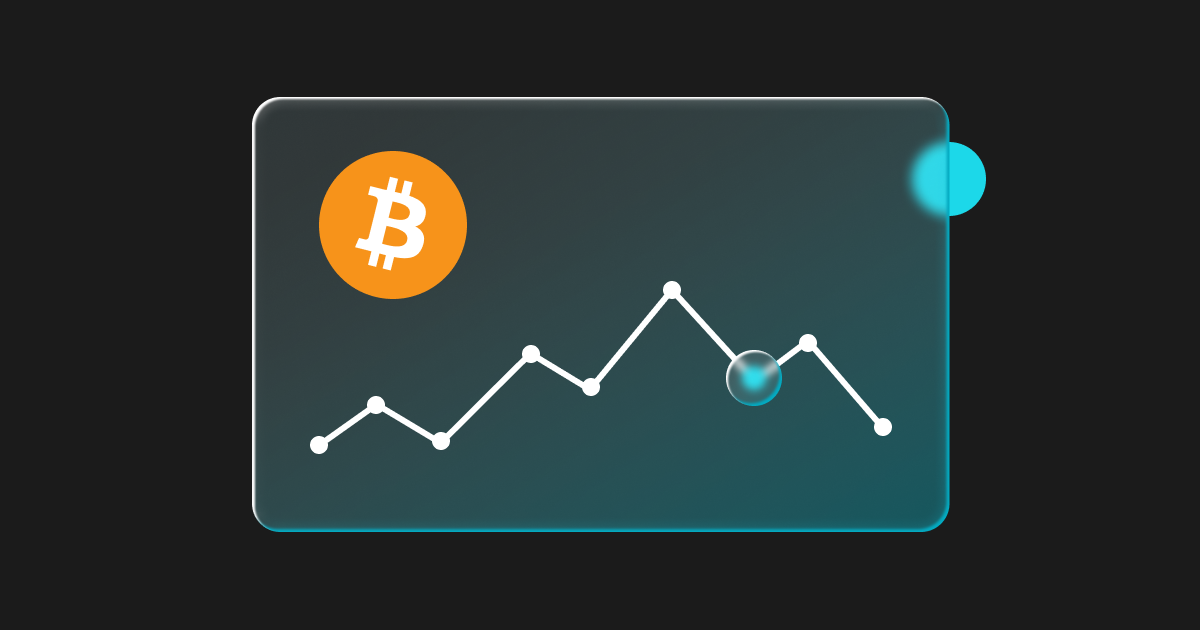What Are Meme Coins?
Meme coins are crypto tokens born from internet jokes and pop culture, but today they command serious attention. For example, Dogecoin – the first and most famous meme coin – was created in 2013 as a playful parody of Bitcoin. Since then, a flood of similar coins has emerged, and community buzz has driven huge market activity: by early 2025, investors were trading over $6 billion of meme coins every day. Dogecoin, Shiba Inu, and Pepe alone make up roughly two-thirds of all meme-coin market cap. This guide will explain what meme coins are, how they work, and why – despite their humorous origins – they’ve become a big part of the crypto world.
What Are Meme Coins?
Meme coins are a type of cryptocurrency inspired by internet memes, pop culture references, and online jokes. They are often created as humorous or satirical alternatives to more serious crypto projects, and their appeal largely lies in their novelty and community-driven nature. Unlike Bitcoin or Ethereum, which were designed with specific technological goals in mind, meme coins usually begin as fun experiments or social commentary that unexpectedly gain traction.
What sets meme coins apart is their reliance on online engagement and viral marketing. These tokens typically don't offer unique utility or advanced features—instead, they thrive on hype, social media buzz, and influencer endorsements. Communities rally around them for entertainment, speculative gains, and the shared culture of internet humor. Dogecoin, Shiba Inu, and Pepe Coin are among the most well-known examples, demonstrating that even a joke can grow into a multi-billion-dollar asset in the crypto world.
Create your Bitget account to explore the potential of meme coins!
How Meme Coins Work
● Launched on Established Blockchains: Meme coins are typically created using smart contract platforms such as Ethereum, BNB Chain, or Solana. They follow standard token formats like ERC-20 or BEP-20.
● Created Using Token Standards and Smart Contracts: Developers use standard templates to launch meme coins. These tokens are defined by smart contracts that set rules like total supply, token name, decimal precision, and transfer functions. The process is often simplified through token generator platforms that require little to no coding knowledge.
● Stored in Digital Wallets and Traded on Exchanges: Meme coins can be held in crypto wallets and traded on both centralized and decentralized exchanges, just like other cryptocurrencies.
● Minimal or No Built-in Utility: Most meme coins are not designed with a clear use case or technological advancement. They are often created purely for entertainment or as social experiments. Some may evolve into broader ecosystems, but many remain “just for fun” tokens.
● Value Driven by Community and Virality: Unlike traditional investments, meme coins don’t gain value through revenue, adoption, or product use. Instead, they thrive on community enthusiasm, viral memes, social media trends, and sometimes endorsements from celebrities or influencers (e.g., Elon Musk with Dogecoin).
● High Volatility and Speculative Trading: Meme coins are known for extreme price swings. A sudden tweet or Reddit thread can send prices soaring within hours. Conversely, the hype can vanish just as quickly, causing steep drops. This makes them popular among speculators looking for quick gains—but also highly risky.
● Short Lifecycle for Many Projects: While major meme coins like Dogecoin and Shiba Inu have built lasting communities and ecosystems, the vast majority of new meme coins are short-lived. Many launch, pump briefly, and then fade into obscurity when community interest moves on.
History of Meme Coins
The meme coin movement began with Dogecoin in 2013, created by Billy Markus and Jackson Palmer as a light-hearted tribute to the Doge meme. What started as a joke quickly gained traction thanks to an enthusiastic online community and viral moments—like raising funds for the Jamaican bobsled team. Dogecoin's popularity exploded during the 2020–2021 bull run, reaching a staggering $88 billion market cap, helped in large part by Elon Musk’s frequent endorsements on X (Twitter).
Dogecoin’s success opened the door for a wave of imitators. In August 2020, Shiba Inu entered the market as an Ethereum-based alternative and reached a $41 billion market cap by the end of 2021. The 2021–2022 bull market saw hundreds of animal-themed and novelty tokens emerge. In the following years, new trends surfaced. Pepe Coin, launched in 2023, quickly rose in popularity, while political-themed tokens also gained traction, such as the “Official Trump” coin.
Types of Meme Coins You Should Know
● Animal-themed coins: Typically feature animals, often used to convey cuteness, humor, or internet appeal.
● Meme/Character-based coins: Built around well-known internet characters, viral images, or cultural symbols.
● Celebrity-themed coins: Inspired by or associated with public figures, aiming to leverage their influence and fan base.
● Political-themed (PolitiFi) coins: Created to reflect, mock, or capitalize on political figures, movements, or events.
● Tech or AI-themed coins: Designed around trending technologies, especially artificial intelligence or futuristic concepts.
What Gives Meme Coins Value?
Unlike traditional cryptocurrencies that derive value from utility, technology, or economic models, meme coins gain their worth from social momentum and speculation. Their prices are largely driven by the collective interest of the community, not by what the coin can actually do. In many cases, meme coins start with little or no use case, but as they gain traction online, their perceived value increases.
Several key factors influence the value of a meme coin:
● Community support: A large, active, and loyal community can significantly boost a meme coin’s credibility and market performance.
● Viral appeal: Humor, relatability, and meme-ability make coins more likely to spread on social media and forums.
● Influencer or celebrity involvement: Mentions or endorsements from high-profile individuals—especially on platforms like X (formerly Twitter)—can cause price surges within hours.
● Exchange listings: Getting listed on popular crypto exchanges increases visibility, accessibility, and trading volume.
● Liquidity and market access: Easy trading, deep liquidity, and integration with wallets and platforms encourage more users to buy in.
● Scarcity and tokenomics: Some meme coins create hype by introducing mechanisms like token burns or capped supplies to drive demand.
In short, meme coins thrive on hype, not hardware. Their value is a reflection of collective belief, entertainment, and the viral nature of internet culture. While this can lead to massive short-term gains, it also brings extreme volatility and risk
How to Make a Meme Coin
Creating a meme coin has become easier than ever, thanks to user-friendly tools and token generator platforms. While building a serious cryptocurrency might require deep technical skills, launching a meme token often takes just a few steps—and very little code.
● Pick a blockchain: Choose Ethereum, BNB Chain, Solana, or another platform that supports token creation.
● Set up a wallet: Use wallets and fund it with the native token to cover fees.
● Define token details: Decide on name, symbol, total supply, and decimals.
● Deploy the token: Use token generator tools or templates to launch your smart contract.
● Add branding: Upload a logo and write a fun, meme-inspired description.
● Promote it online: Share on social media, build a community, and encourage trading.
● List on DEXs: Provide liquidity and make the token tradable on platforms.
That’s it—your meme coin is live. The real challenge? Making it go viral.
Top 5 Meme Coins to Watch in 2025
As the meme coin space continues to evolve, a few standout projects have managed to maintain momentum and build strong communities. Here are five meme coins worth keeping an eye on in 2025:
1. Dogecoin (DOGE)
The original meme coin remains a market leader in 2025. With strong community support and consistent visibility, Dogecoin still commands attention—especially when public figures like Elon Musk mention it. Its simplicity and name recognition make it a top contender.
2. Shiba Inu (SHIB)
Often dubbed the “Dogecoin killer,” Shiba Inu has evolved beyond meme status. Built on Ethereum, it now includes its own ecosystem with DeFi features and the Shibarium layer-2 network. The team continues to develop utilities around SHIB, helping sustain interest.
3. Pepe Coin (PEPE)
Based on the internet-famous frog meme, Pepe Coin rose quickly in 2023 and still holds strong in 2025. Backed by a passionate online community, its growth shows how powerful meme culture remains in shaping market trends.
4. Bonk (BONK)
As Solana’s leading meme coin, Bonk gained traction through fast transactions and low fees. Its success on the Solana network and increasing visibility in NFT and DeFi communities keep it relevant and widely traded.
5. Floki (FLOKI)
Inspired by Elon Musk’s pet, Floki markets itself as a movement rather than just a meme. With ongoing development in gaming, NFTs, and DeFi (through “Valhalla” and “FlokiFi”), it stands out for offering more than hype alone.
Conclusion
Meme coins may have started as internet jokes, but by 2025, they've grown into a vibrant and unpredictable corner of the crypto world. While most lack traditional utility, their power lies in community engagement, viral appeal, and the ability to turn humor into real market momentum. From Dogecoin’s early days to the rise of Shiba Inu and the explosive popularity of Pepe, meme coins have shown that culture and community can drive serious value.
For investors, meme coins offer both opportunity and risk. Some evolve into thriving ecosystems, while others fade as fast as they rise. Whether you're looking for entertainment, experimentation, or a high-risk, high-reward asset class, meme coins are worth watching. Just remember: behind every moonshot is a meme—and behind every meme, a community ready to make it matter.
Register now and explore the wonderful crypto world at Bitget!
Disclaimer: The opinions expressed in this article are for informational purposes only. This article does not constitute an endorsement of any of the products and services discussed or investment, financial, or trading advice. Qualified professionals should be consulted prior to making financial decisions.

















.png)

















